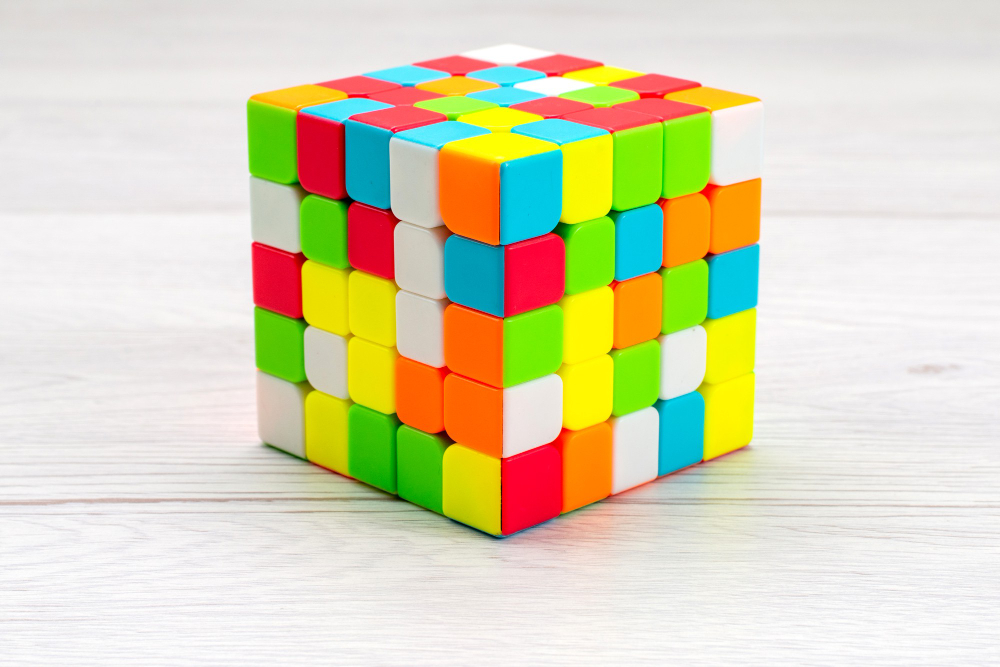
Improving your Rubik’s Cube 3×3 solving time is a goal shared by many enthusiasts, from beginners who’ve just cracked their first solve to intermediate solvers looking to enter the competitive scene. The journey from solving to speed solving is paved with practice, patience, and a deep understanding of the cube’s mechanics. This article outlines 10 strategies designed to significantly enhance your Rubik’s Cube 3×3 solving time, turning a leisurely pastime into a swift, efficient, and satisfying skill.
1. Solidify Your Understanding of the Basics
Before diving into advanced techniques, ensure your grasp of the basic solving methods is rock-solid. Understanding how each move affects the cube and mastering the beginner’s method without hesitation lays a strong foundation for advanced strategies. This also involves being comfortable with the cube’s notation system (F, R, U, B, L, D) for following algorithms.
2. Transition to Advanced Solving Methods
Once you’re comfortable with the basics, it’s time to explore advanced solving methods like CFOP (Fridrich Method), Roux, or ZZ. These methods introduce efficient algorithms for solving the cube faster by reducing the number of moves required. For instance, CFOP’s four-step process (Cross, F2L, OLL, PLL) is a popular choice that significantly cuts down solving time with practice.
3. Master Finger Tricks
Finger tricks are techniques used to turn the cube’s faces with minimal wrist movement, enabling faster and smoother solves. Learning to perform quick turns with your fingers rather than your whole hand can dramatically improve your speed. Start by practicing turns on the U (upper) and D (down) layers with your index and ring fingers, respectively.
4. Optimize Your Cross Solution
The cross is the first step in most 3×3 solving methods and setting it up efficiently is crucial for a good solve. Aim to solve the cross in 8 moves or less, and with practice, try to plan your entire cross during the inspection time. A trick here is to solve the cross on the bottom layer, which allows for better visibility and planning for the next steps.
5. Improve Your F2L (First Two Layers) Efficiency
F2L can be the most time-consuming part of the solve if not done efficiently. Practice solving the corner-edge pairs and inserting them without looking at the pieces. Learning intuitive F2L rather than relying solely on algorithms allows for more flexibility and quicker decision-making during solves.
6. Drill OLL and PLL Algorithms
OLL (Orienting the Last Layer) and PLL (Permuting the Last Layer) are the final steps in the CFOP method, requiring memorization of algorithms. Practice these algorithms until you can execute them swiftly and without hesitation. Use algorithm trainers and repetition to improve muscle memory for these moves.
7. Reduce Your Inspection Time
The WCA (World Cube Association) allows 15 seconds of inspection time before starting the solve. Use this time wisely to plan as much of your solve as possible, starting with the cross and potentially identifying the first few F2L pairs. Reducing hesitation at the beginning of your solve can significantly lower your overall time.
8. Practice Look-Ahead
Look-ahead is the ability to know what moves you’ll make next without pausing. This skill is crucial for fluid solves and involves tracking the next pieces to solve while executing the current algorithm. Start by slowing down your solves to focus on eliminating pauses between steps, gradually increasing speed as your look-ahead improves.
9. Use a Speed Cube
Upgrading from a standard Rubik’s Cube to a speed cube can make a noticeable difference in your solving time. Speed cubes are designed for faster turning and better corner cutting, reducing lockups and allowing for quicker moves. Experiment with different models to find one that suits your turning style and preferences.
10. Analyze and Learn from Your Solves
Recording and analyzing your solves can provide insights into where you’re losing time. Look for patterns in your solves where you hesitate or make unnecessary moves. Utilizing solving software or apps that provide detailed breakdowns of each step can help identify areas for improvement.
Conclusion
Improving your Rubik’s Cube 3×3 solving time is a journey of continuous learning and practice. By incorporating these strategies into your routine, you’ll not only become faster but also gain a deeper appreciation for the intricacies of the puzzle. Remember, every top solver started with a single, slow solve; with dedication and perseverance, achieving remarkable speed and efficiency is within your reach. Whether you’re solving at home for fun or competing in tournaments, the ultimate goal is to enjoy the process and celebrate your progress.





